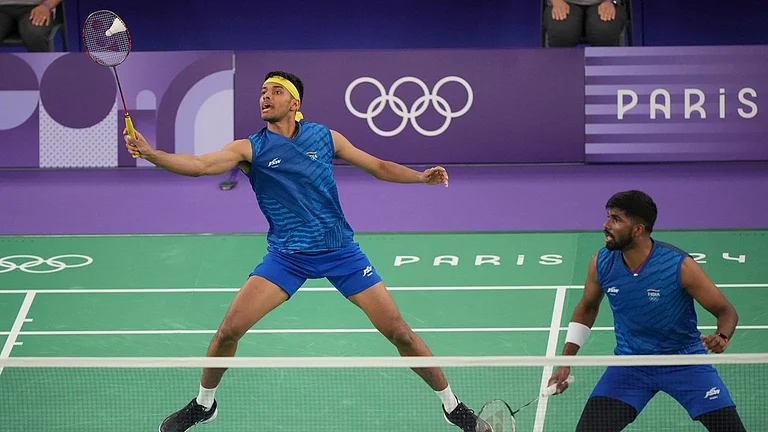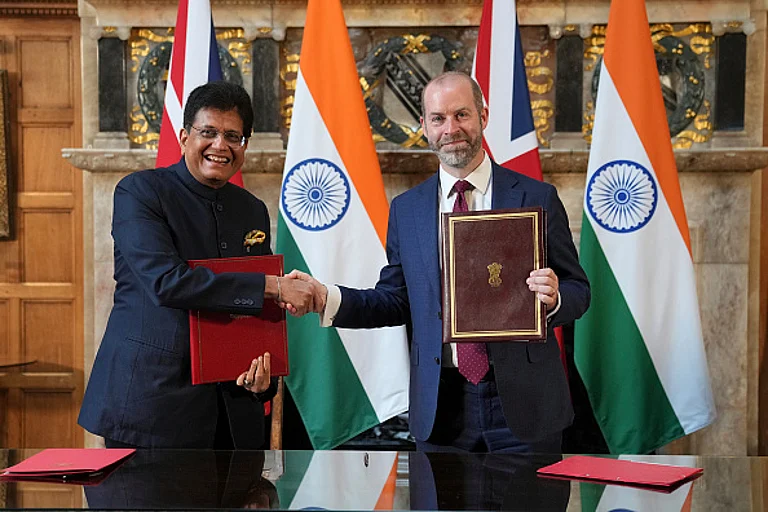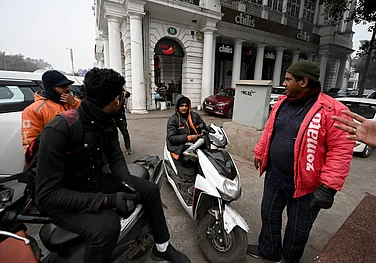The mental picture one has of the old route from Agra via Fatehpur Sikri—a single-lane, tree-lined country road, with bhaaluwaalas and their emaciated sloth bears—seems so last century. A toll highway stares at you now, a smooth ribbon of asphalt, featureless except for Akbar’s city walls that whiz past. The dancing bears have gone to the safe confines of a rescue centre. Their keepers were the dirt-poor Kalandars—an intriguing element in the caste matrix, non-Ashraf Muslims, they break bread only with Dalits like Doms and Dhangars. They have either been reskilled or have vanished back into the surrounding ruralia as lowly sharecroppers and daily-wagers. The local MLA is from the BSP and a Thakur by caste—a sign that old social hierarchies have found a way of coexisting with the politics of empowerment in this southwestern corner of Uttar Pradesh. Highways may change shape, but real change comes only at the pace of a bullock cart in rural India.
Across the border in Rajasthan, just down the street from the Bharatpur sanctuary, a waiter at an upscale restaurant is pretty thrilled with the straws in the wind. “This time she will be back,” he says, beaming. He’s talking about Mayawati and her chances at the upcoming UP elections—it’s an assessment many people voice on the ground. Why would he be interested? Two reasons. Bharatpur may be in Rajasthan, but Jaipur is nearly 200 km away, and a mere 20 km or so on two sides looms UP. “We are closer to Braj culturally—all of us go for the 84-kos parikrama to Govardhan-Mathura.” Secondly, and this cuts closer to the bone, he is from the “same samudaay (caste)”. It’s a rueful predicament for people like him. Dalits down the highway at least have the BSP; no such option is available in Rajasthan. The reservation debate in this district, in fact, centres around the dominant Jats, who were denied OBC status because the Bharatpur royals were from that caste.
This Sunday morning, NH-2 is a riot of vehicles clad in blue, the BSP’s colour. The destination is Kothi Meena Bazar in Agra, the first port of call for Mayawati as she kicks off a season of poll rallies. (A district with a high concentration of Dalits and Muslims, Agra is a natural choice.) All along the highway from Delhi, buses lounge at pit-stops while passengers—their hardscrabble lives writ all over their faces—break for tea. There are Punjab, Haryana and UP numberplates among these. The mood is bullish and everyone is eager to talk. “There’s no doubt, we’ll take it. Sa-Pa ka khel khatam,” says Ramesh Chand, of village Shergarh Bangar, Mathura. He’s a Jatav, a Dalit caste he admits is Mayawati’s “bank balance”, but he insists everyone is together this time. “Look at that fellow with us, he’s a Brahmin.” Sure enough, the referent is otherwise indistinguishable from the rest, but he sports the tell-tale tuft. There may be something to this talk of cross-caste consolidation. A few miles down, a Yadav dhaba owner does BSP politics—his sons have gone for work related to the rally. “They’ve got a waterproof tent, and four lakh chairs,” he says, exaggerating a trifle in his excitement.
Despite all the damage limitation, the BJP/RSS may have scored a huge self-goal with a string of episodes—starting with Rohith Vemula’s suicide—where its inherent ambivalence towards Dalits showed through. The discourse emanating from Dalit intelligentsia before the 2014 election was marked by an excoriating critique of Congress and left-liberal ‘duplicity’ as humanist in name and Brahminical in reality. An oft-heard sentiment was, “At least the BJP is more honest.” This found a mirror in voting patterns in 2014. From there to August 2016, where its ‘dhamma chetna yatra’ in Agra couldn’t attract even 500 Dalits (forcing Amit Shah to opt out), is like a little tectonic plate shifting.
On this muggy Sunday, the BSP’s rally offers a study in stark contrast. It’s a deluge of humanity at the grounds and spilling over to the streets, with slogans, flags, cheers at Behenji’s battle-cries, and a riot of hands waving back as her helicopter circles the ground twice in an aerial farewell. A book stall is doing brisk business: books on the Buddha, Ambedkar, the Constitution—and yes, even a Manusmriti, with a black cover. Another man, quiet and bespectacled, is selling posters, mostly of the Buddha. “We are not party-bound, we are Buddhists,” he says. “Agra has one lakh Buddhists. We converted en bloc in March, the largest such event after Ambedkar.” This is the spectre that troubles the RSS/BJP, the denominational mobility of this sector of ‘Hindu’ society and its potential electoral expression.
























